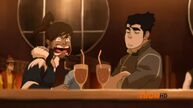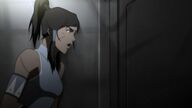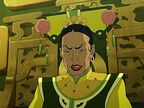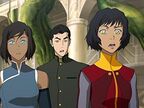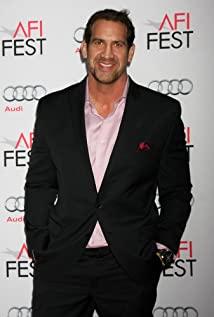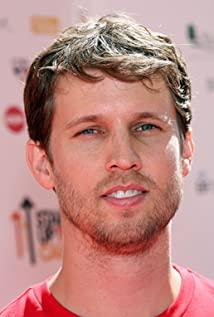When Korra left the polar camp, a completely novel world was presented to us. Different from the quasi-Qing Dynasty-Japan (?) period in last air-bender, this work is a world similar to New York (?) in the 1920s. In the main melody of erhu music, jazz is sometimes interspersed. On both sides of the street are shops with glass curtain walls, and there are also rent-collecting mafia. Korra, riding a polar bear and dog, looked at the busy traffic, feeling so strange. In the sky is the police airship. There are a few scenes of late night car chasing, which feels like the batman animated series. The live broadcast of the arena matches, mechas and motorcycles all showed the progress of technology and the possibility of ordinary people using technology to fight against bending.
Unlike the Harry Potter series (where magic interferes with modern technology), the Avatar and Star Wars series both highlight the confrontation between technology and the supernatural. Both the equalist in this work and the bounty hunter in Star Wars have developed and perfected the skills of using technology to fight magic/force. This is the most interesting place.
When the end of the work progressed to large-scale air and sea combat, the effect of bending is not particularly obvious. Just like the martial arts hawks in Jin Yongzhong facing the Mongolian soldiers, no matter how deep your skills are, it is difficult to resist the cavalry charge.
Finally, the nympho, Mami is great.
View more about The Legend of Korra reviews



